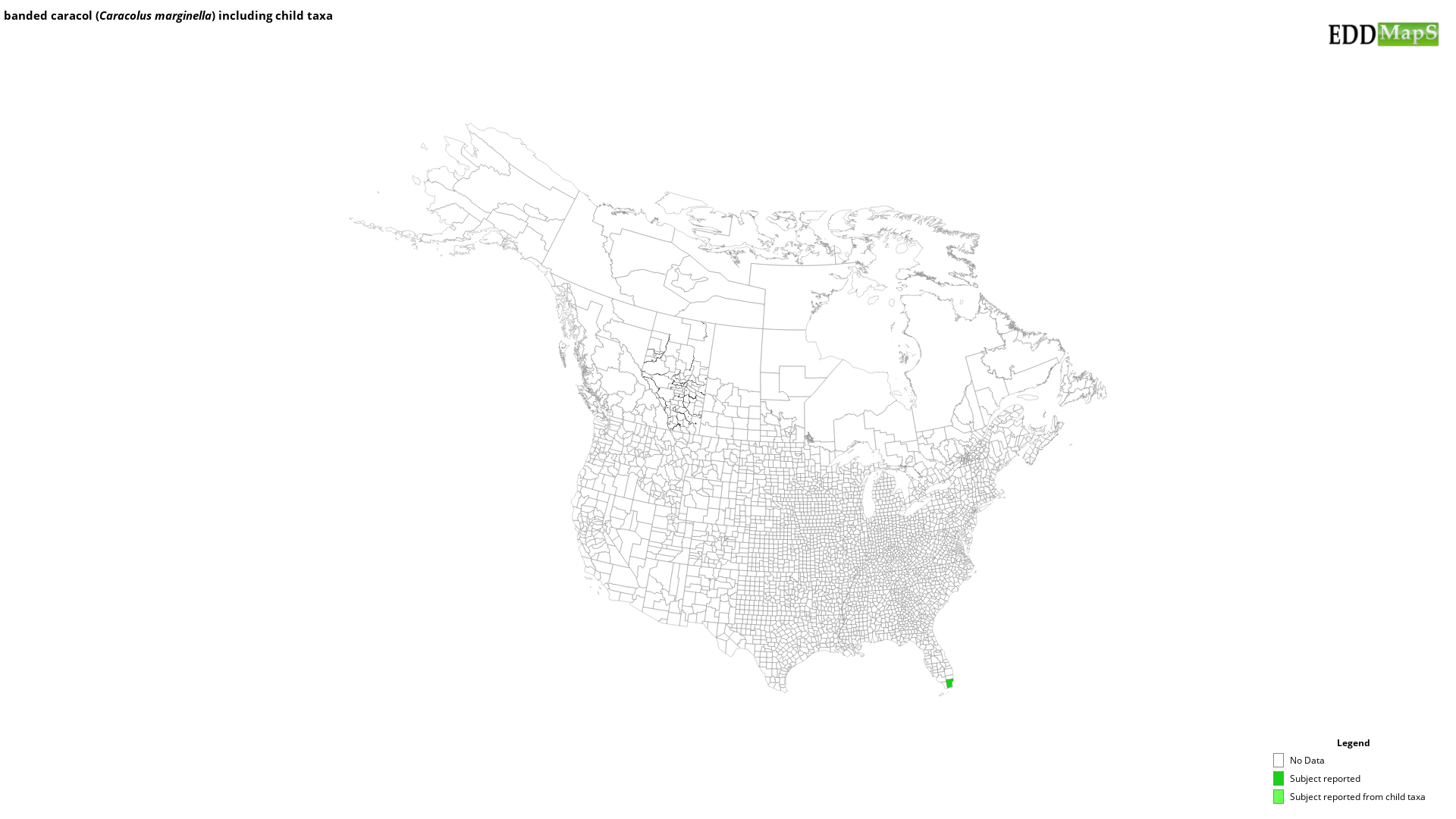banded caracol
(Caracolus marginella)
This species is Introduced in the United States
Origin
Caracolus marginella is native to Cuba. Banded caracol were likely introduced to the United States as intentional releases.
Life Cycle
C. marginella is distinctive from other species occurring in Florida due to its large size (1.4-1.8 in.; 35-45 mm) and banded shell color pattern. The shell has five to six gradually expanding whorls, the base is slightly swollen, and it is smooth. C. marginella are terrestrial snails. Banded caracol has been recorded eating fallen flowers and algae growing on the trunks of palm trees.
Distribution
C. marginella are established in south Florida.
Control Efforts
C. marginella is not considered to be an agricultural pest. The effects of Banded caracol is unknown.
http://entnemdept.ufl.edu/creatures/misc/pleurodontidae_snails.htm
Caracolus marginella is native to Cuba. Banded caracol were likely introduced to the United States as intentional releases.
Life Cycle
C. marginella is distinctive from other species occurring in Florida due to its large size (1.4-1.8 in.; 35-45 mm) and banded shell color pattern. The shell has five to six gradually expanding whorls, the base is slightly swollen, and it is smooth. C. marginella are terrestrial snails. Banded caracol has been recorded eating fallen flowers and algae growing on the trunks of palm trees.
Distribution
C. marginella are established in south Florida.
Control Efforts
C. marginella is not considered to be an agricultural pest. The effects of Banded caracol is unknown.
http://entnemdept.ufl.edu/creatures/misc/pleurodontidae_snails.htm
Maps
EDDMapS Distribution - This map is incomplete and is based only on current site and county level reports made by experts, herbaria, and literature. For more information, visit www.eddmaps.org
State Lists - This map identifies those states that have this species on their invasive species list or law.
Invasive Listing Sources
Taxonomic Rank
| Domain: Eukarya |
| Kingdom: Animalia |
| Phylum: Mollusca |
| Class: Gastropoda |
| Subclass: Heterobranchia |
| Infraclass: Euthyneura |
| Superorder: Eupulmonata |
| Order: Stylommatophora |
| Suborder: Helicina |
| Infraorder: Helicoidei |
| Superfamily: Sagdoidea |
| Family: Solaropsidae |
| Subfamily: Caracolinae |
| Genus: Caracolus |
| Caracolus marginella |
References
Common Name Reference: Integrated Taxonomic Information System on-line database.
Scientific Name Reference: Integrated Taxonomic Information System on-line database.


